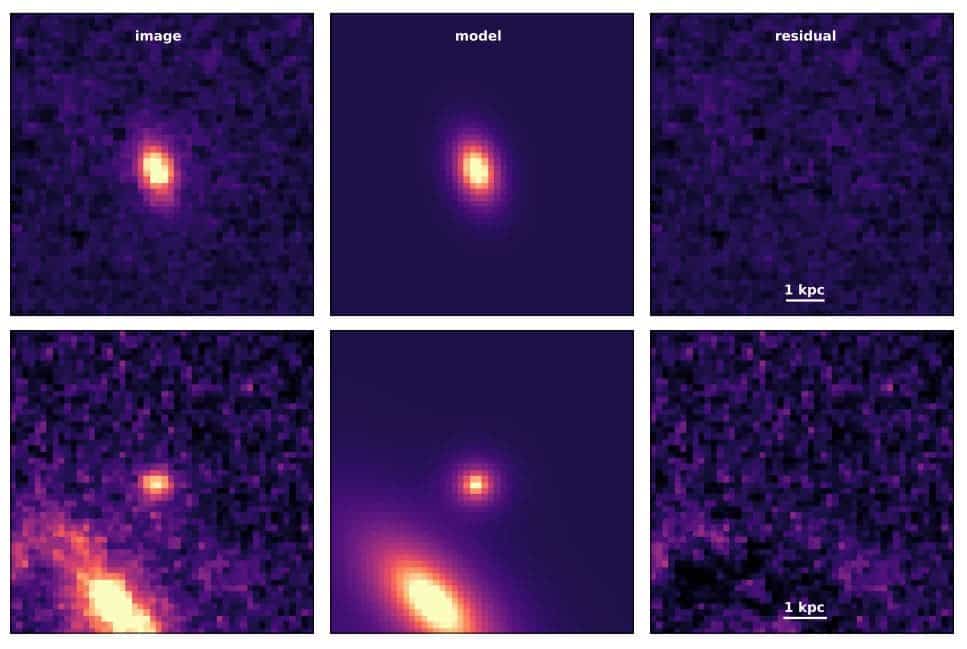The James Webb Space Telescope is already carving a name for itself only one week after snapping its first images. Data received from the telescope includes what may very well be the oldest and most distant galaxy humanity has ever seen.

According to a preliminary analysis of the data at the Harvard Center for Astrophysics the galaxy in question, known as GLASS-z13, dates back to roughly 13.5 billion years ago. This would put it just 300 million years shy of the creation of the universe during the Big Bang, and make it around 100 million years older than any other structure identified to date.
Because of the mind-bending distances involved in the observation of distant space structures, the farther out we peer, the further back in time we look as well. As such, the image we see of GLASS-z13 is as it appeared in the distant history of the Universe. Essentially, this is not only the farthest structure we’ve ever seen — this is also as far as any human being has ever seen back in time.
Vintage
“We’re potentially looking at the most distant starlight that anyone has ever seen,” says Rohan Naidu, a Graduate Student who analyzed the data at Harvard.
Although we know that GLASS-z13 existed during the early days of the cosmos, its exact age remains unknown; it could have formed at any time during those first 300 million years.
The venerable galaxy was spotted in the ‘early release’ data recorded by James Webb’s infrared imaged NIRcam. This dataset was the same one that contained the telescope’s first picture, revealed by NASA last week. The team combed through this data using several different infrared filters, searching for the signatures of extremely distant galaxies.
They explain that below particular thresholds of infrared light, all photons get absorbed by naturally-occurring hydrogen clouds in the Universe that lie between us and the object we’re looking at. The filters used by the researchers were meant to identify these drops in photons, and judging from multiple such points, they can infer the presence of even very distant galaxies.
Two structures popped out: GLASS-z13 and another, less ancient GLASS-z11.
“We searched all the early data for galaxies with this very striking signature, and these were the two systems that had by far the most compelling signature,” said Naidu. “There’s strong evidence, but there’s still work to be done”.
GLASS-z13 appears as a red blob with a speck of white in its center against a wider image of the distant cosmos called a “deep field” when translated into the visible spectrum.
A very surprising finding about GLASS-z13 was its mass: this is estimated at one billion Solar masses, which is “potentially very surprising” given how soon after the Big Bang the galaxy formed, and “something we don’t really understand”, Naidu explains.
The findings were reported on by Naidu and his colleagues, an international team of 25 astronomers that processed and analyzed the data from the James Webb Space Telescope. The findings were published on a preprint server while they await peer review, but have already set the world of astronomy humming with excitement. According to Naidu, another team of astronomers, led by Marco Castellano at the National Institute of Astrophysics in Rome has processed the same dataset and reached similar conclusions, which helps boost confidence in the results.
Discoveries such as these were one of the main objectives of the James Webb Space Telescope. Because very old galaxies are so distant from Earth, the light they emit is greatly shifted, stretched, and distorted into the infrared spectrum by the expansion of space until they reach our planet. The James Webb is equipped to detect and record this light with more precision than anything before it, or anything that could be hoped for on the surface of our planet.
Going forward, the team wants to ask the telescope’s managers for time to carry out spectroscopy analysis on the identified structure to get a better measurement of the distance it is at.
“Right now, our guess for the distance is based on what we don’t see – it would be great to have an answer for what we do see,” said Naidu.
The paper “Two Remarkably Luminous Galaxy Candidates at z ≈ 11 − 13 Revealed by JWST” has been published in the preprint server arXiv.


